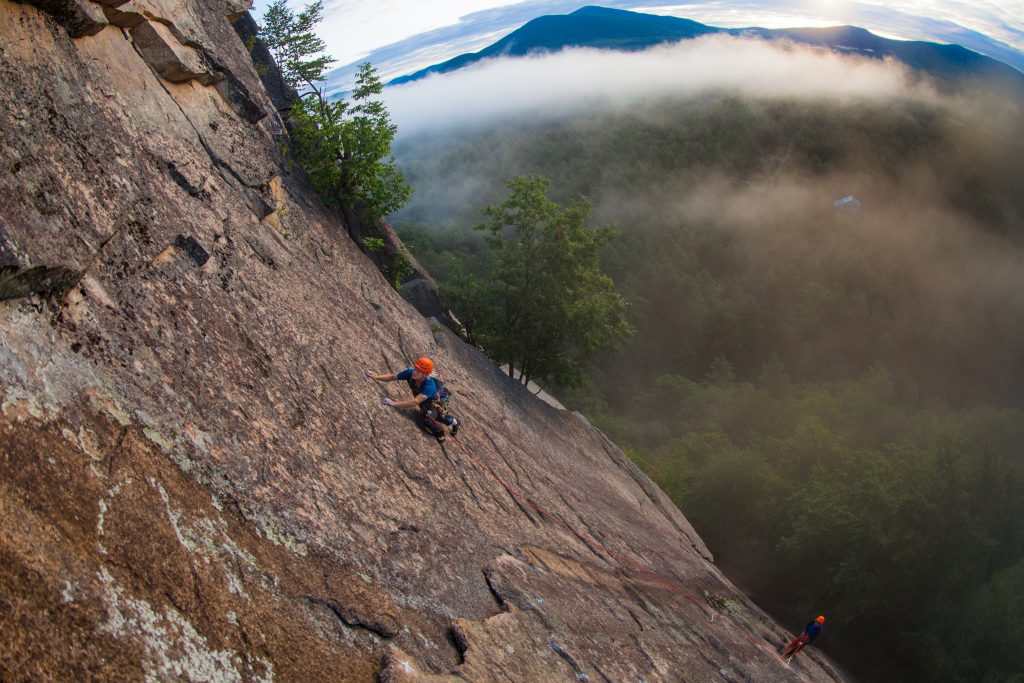Journeying into the Great Outdoors

Climbing long existed on the outskirts of society and sport. Climbing gyms, especially today’s modern and inclusive ones, have dramatically changed this. At Salt Pump, we feel privileged for the daily opportunity to introduce people to the sport and enrich the lives of new and old climbers alike. We are also aware of the potential consequences when climbers raised in the steel walls of a gym head outdoors.
Certain risks can be predicted (falling rocks) and their consequences mitigated (wearing a helmet), while others cannot. Newer climbers are particularly susceptible to risks which remain unforeseeable due to lack of experience. The more you learn, the fewer these ‘unknown unknowns’ becomes.
With summer just around the corner, and everyone yearning for more time in the sun, here is some advice for transitioning to climbing over real rock.
Perhaps the biggest factor to safely learning to climb outdoors is whom you climb with. Choose your partners carefully. The easiest way to ensure your first forays outside are successful is to hire a professional guide. More experienced friends often work, but beware – that guy who’s always offering free advice in the gym may not know as much as it seems and could end up doing you a disservice if he’s boned up on current best practices. Generally, it is best to enroll in formal classes (such as our own Skills Series) to learn the core knowledge and view these informal mentors as icing on the cake, providing nuance and perspective, once you feel you have enough experience under your belt to vet and judge partners for yourself.
You read all nine editions of Freedom of the Hills, practiced your hip belay, took your gym’s lead class, and even went outdoors under the watchful eye of your credit card crimping, hard charging north country friend. You feel ready to take a stab at it on your own and wonder where to begin. The amount of pre-trip planning which goes into a successful outing can feel overwhelming. As you gain experience and acquire a feel for the different climbing destinations throughout Maine and New Hampshire, it eventually becomes automatic. For now, a few things to consider:
- Location: We tend to pick a location, then look for a partner, but it should usually be the reverse. Is this a family outing, where a safe base and short walk are necessary? Are you and your partner comfortable lead climbing and building trad anchors, or should you stick to a spot where you can walk to the top and set up monolithic anchors off trees? For your first independent outings, consider returning to the same venues you have already visited with a guide or more experienced friend.
- Weather & Climate: Fully immersing yourself into outdoor climbing occasionally requires a willingness to climb in mildly unpleasant conditions, be it temperature, humidity, precipitation, wet rock, etc. However, your crag of choice can be intentionally exploited to offer the best possible conditions. Think about the cliff’s aspect (sun/shade), elevation (breeze/temperature), terrain (overhung=dry), and outlying geography (swamp=buggy).
- Equipment: Obviously, the gear required for a 40ft sport climb and a 600ft trad climb are going to be vastly different. Moreover, it’s often the little things – remembering the sunscreen, bug dope, a good shade hat, or a thermos of hot cocoa and an extra layer – that make all the difference between a fun outing and a suffer fest.
- Travel, parking, approach: Rumney on a sunny weekend? Better arrive early. An obscure crag nestled in the white mountains? Better research how to get there and still plan on getting lost.Don’t like people, long approaches, or rain? Good luck!
You can find most of this information by perusing the guidebook, wading through online forums, and pestering your more experienced friends. Strive to always gather intelligence about local areas. For the rest? Repetition is the mother of mastery and the knowledge gained from mistakes is priceless.
Most climbing venues exist on private or federal/state land where access is far from guaranteed. Perhaps the most frightening consequence of more climbers going outside is that the adverse behavior of a few can jeopardize future climbing for all. Proper outdoor etiquette includes properly disposing of human waste and trash, keeping the overall noise down, brushing away chalk tick marks, staying on the trail, and other common sense Leave No Traceprinciples. Consider supporting and volunteering for organizations which provide local stewardship, advocate for greater access, and aim to preserve the outdoors as a gem for future generations to enjoy.Some of our favorites include:
- Friends of the Ledges: nhledges.org
- The Access Fund: accessfund.org
- Rumney Climbers Association: climbrumney.com
- Protect Mount Washington: protectmountwashington.org
- American Alpine Club: https://americanalpineclub.org
